Learn how to deploy the Azure IoT Hub integration for The Things Stack.
Prerequisites
- Access to an Azure account. Create a new account
- An application in The Things Stack. See instructions
Create API Key
Go to your application in The Things Stack Console, navigate to Integrations → Azure IoT on the left hand menu and click on Expand next to Azure IoT Hub. Now click on Generate API Key.
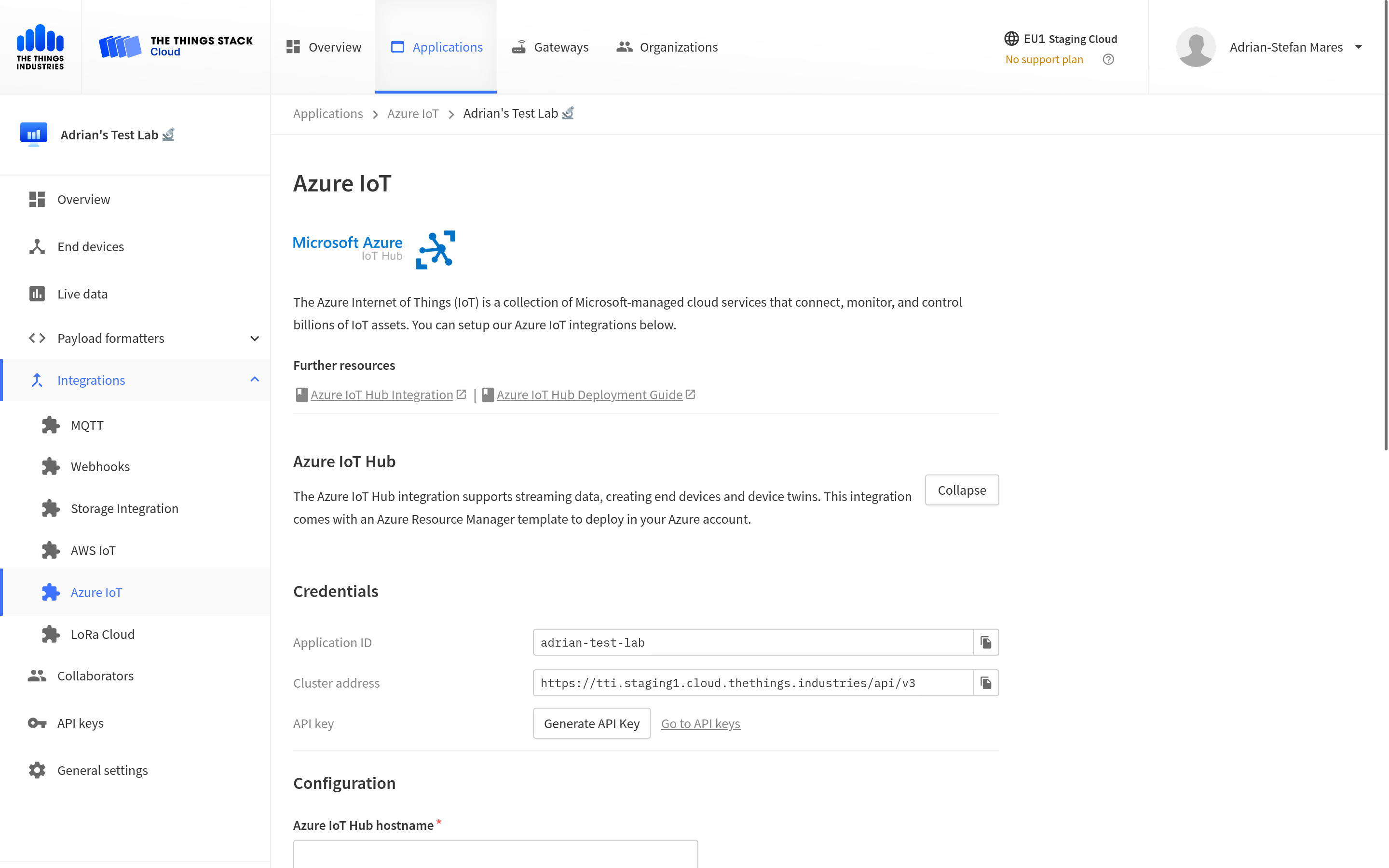
Copy the generated API key and store it in a safe place, because you will need it in the next section.
Leave the integration page open, as you will need to copy in your Azure IoT Hub hostname and Azure IoT Hub access key before saving the integration.
Deploy Azure Resource Manager Template
View template as JSON or Bicep
Settings
The following parameters configure the integration:
- Location: The region in which the Azure resources will be deployed. Defaults to the region used by the selected Resource Group.
- Name Suffix: The suffix added to the Azure Resources. Defaults to a random string.
- Stack Cluster Address: The address of your The Things Stack deployment. Can be retrieved from the Azure IoT integration page in The Things Stack (see image above).
- Stack Application ID: The application ID of your application. Can be retrieved from the Azure IoT integration page in The Things Stack (see image above).
- Stack API Key: The application API key that you generated in the previous step.
- Enable fallback route: Defines if the Azure IoT Hub fallback route should be added. If enabled, uplink messages will be submitted to the default
eventsendpoint in your Azure IoT Hub.
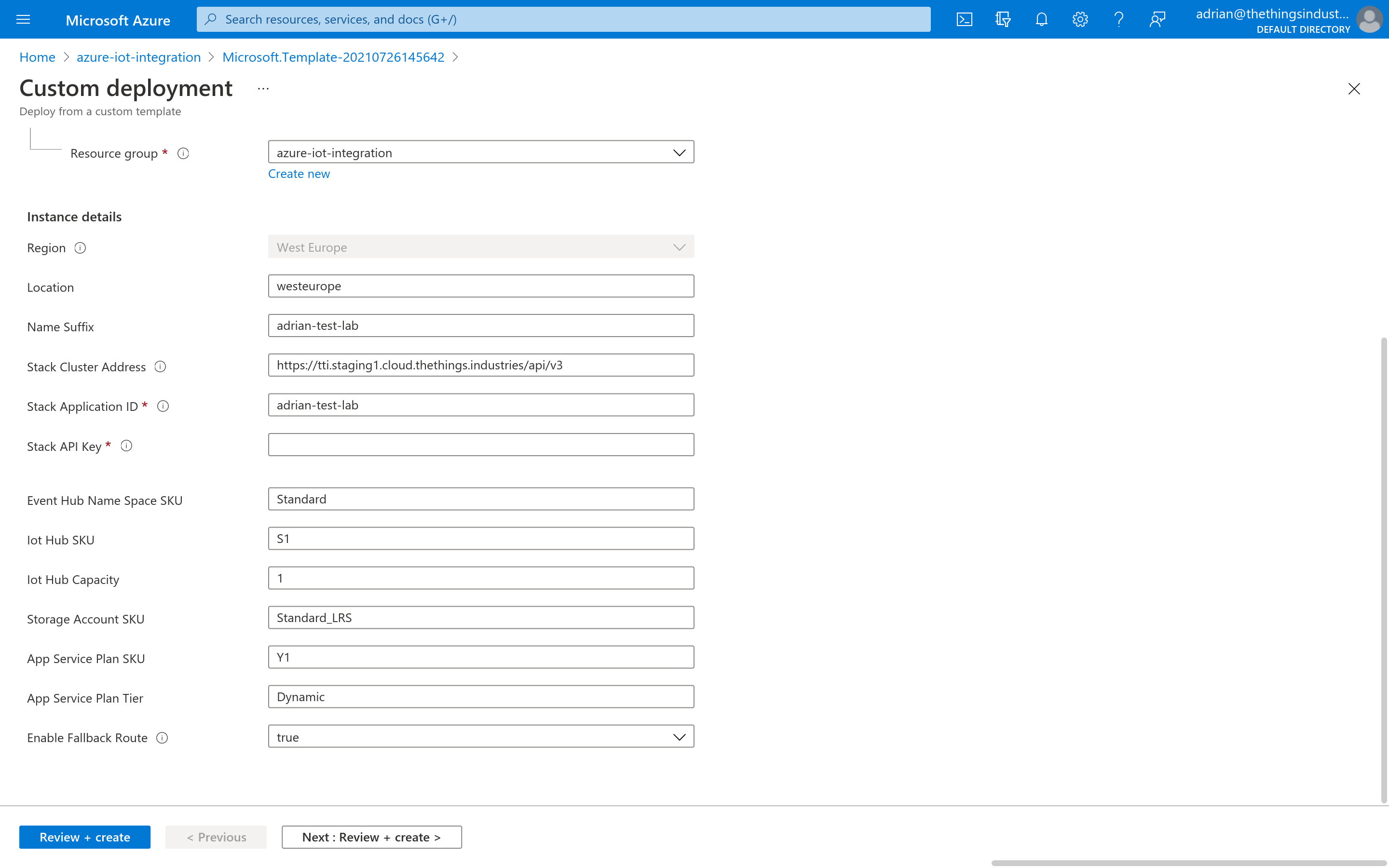
Click Review + Create, then Create.
Note:
Creating all resources can take up to five minutes. ☕When the deployment is done, you’ll see the status Your deployment is complete.
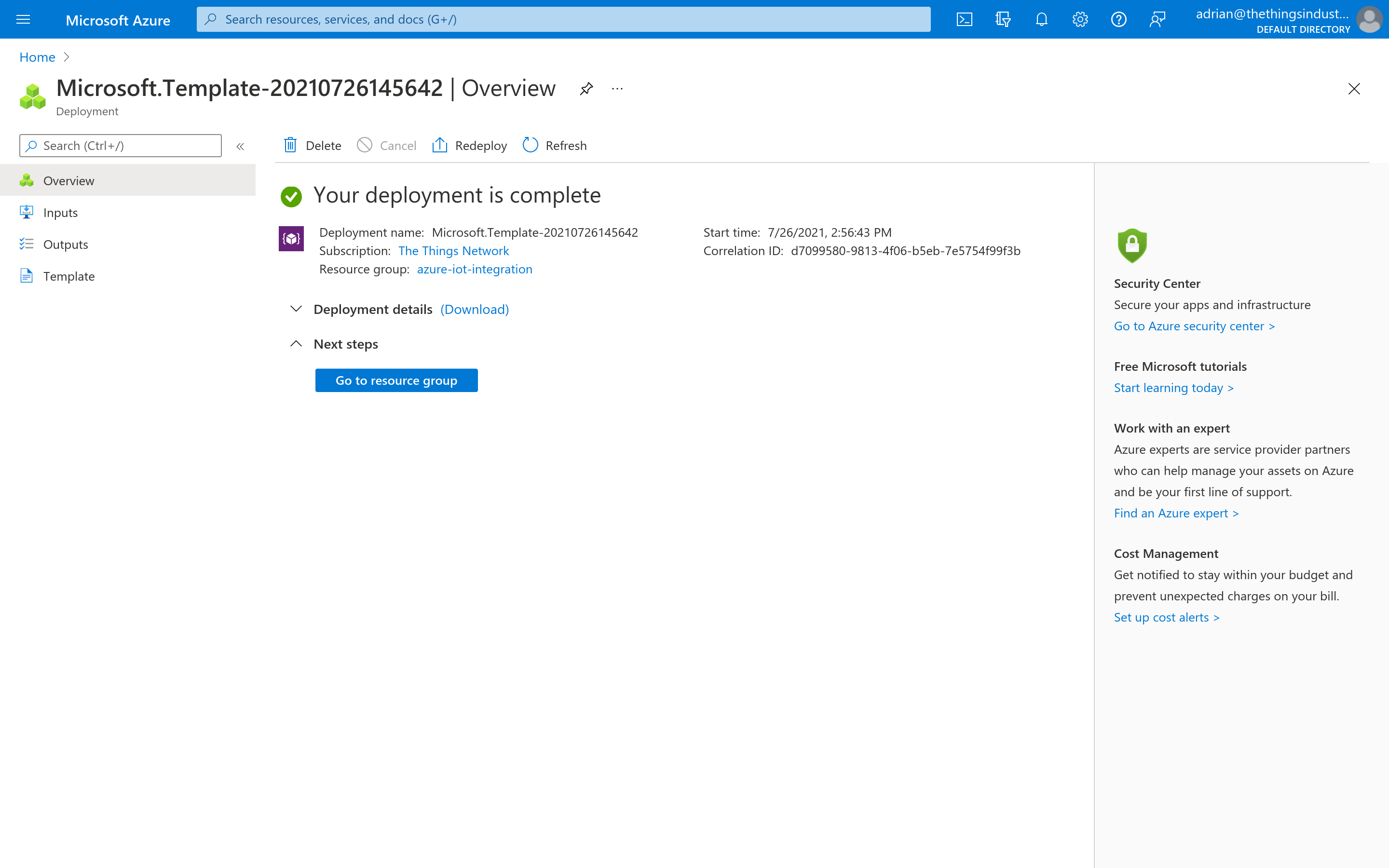
After the deployment has finished, click Outputs.
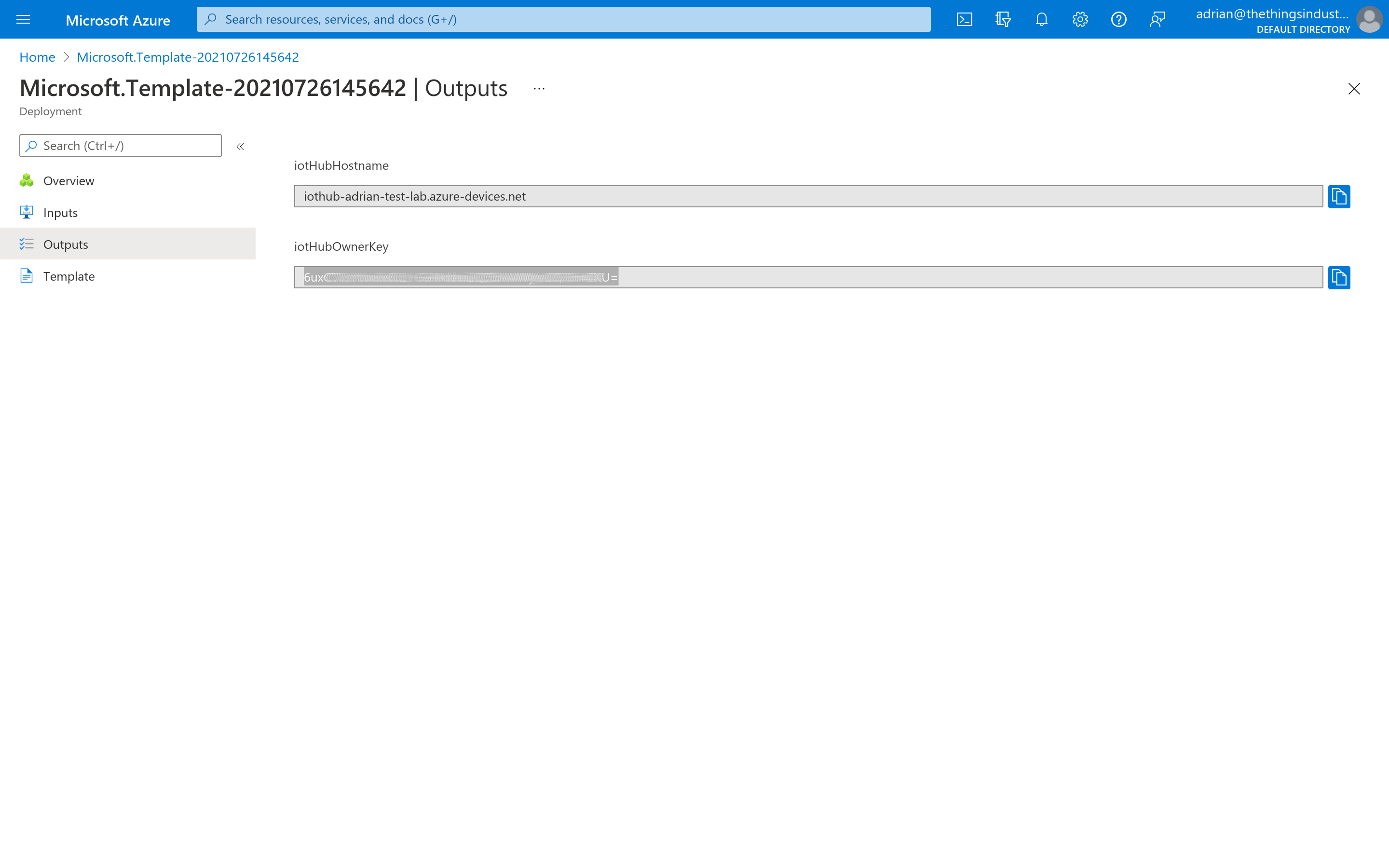
The two outputs can now be copied into your integration settings as Azure IoT Hub hostname and Azure IoT Hub access key. Click on Enable/Update Azure IoT Hub integration.
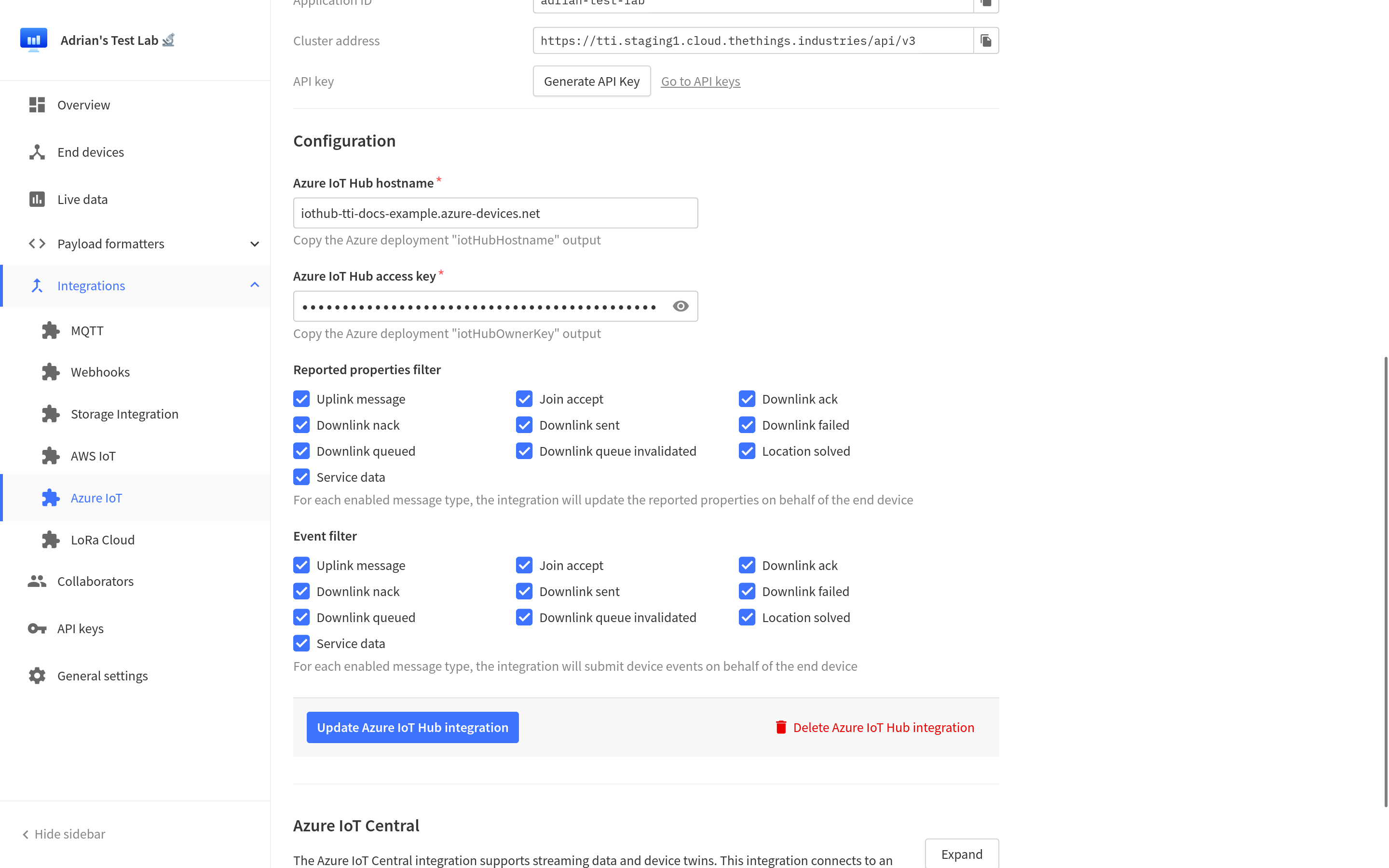
Congratulations! 🎉 You have now set up the Azure IoT Hub integration for The Things Stack!